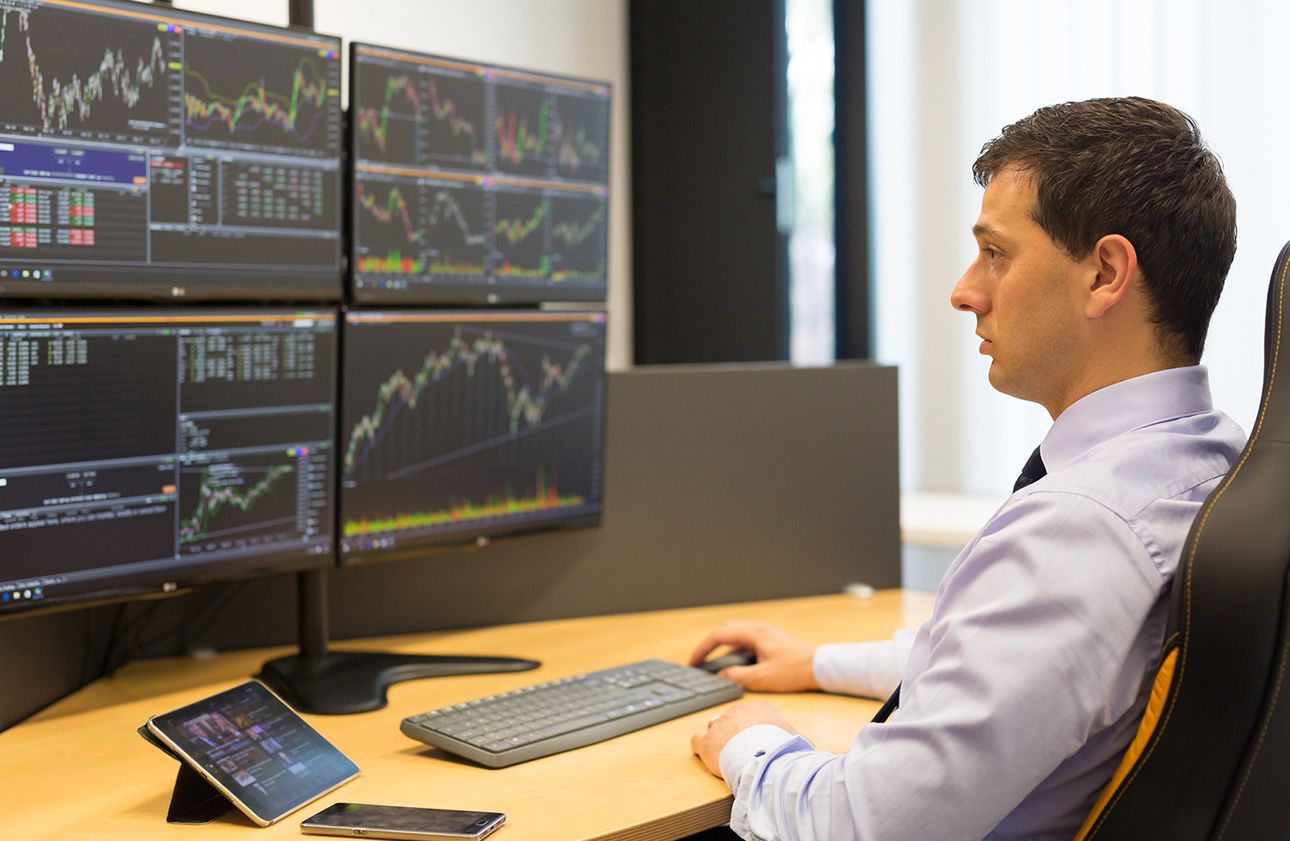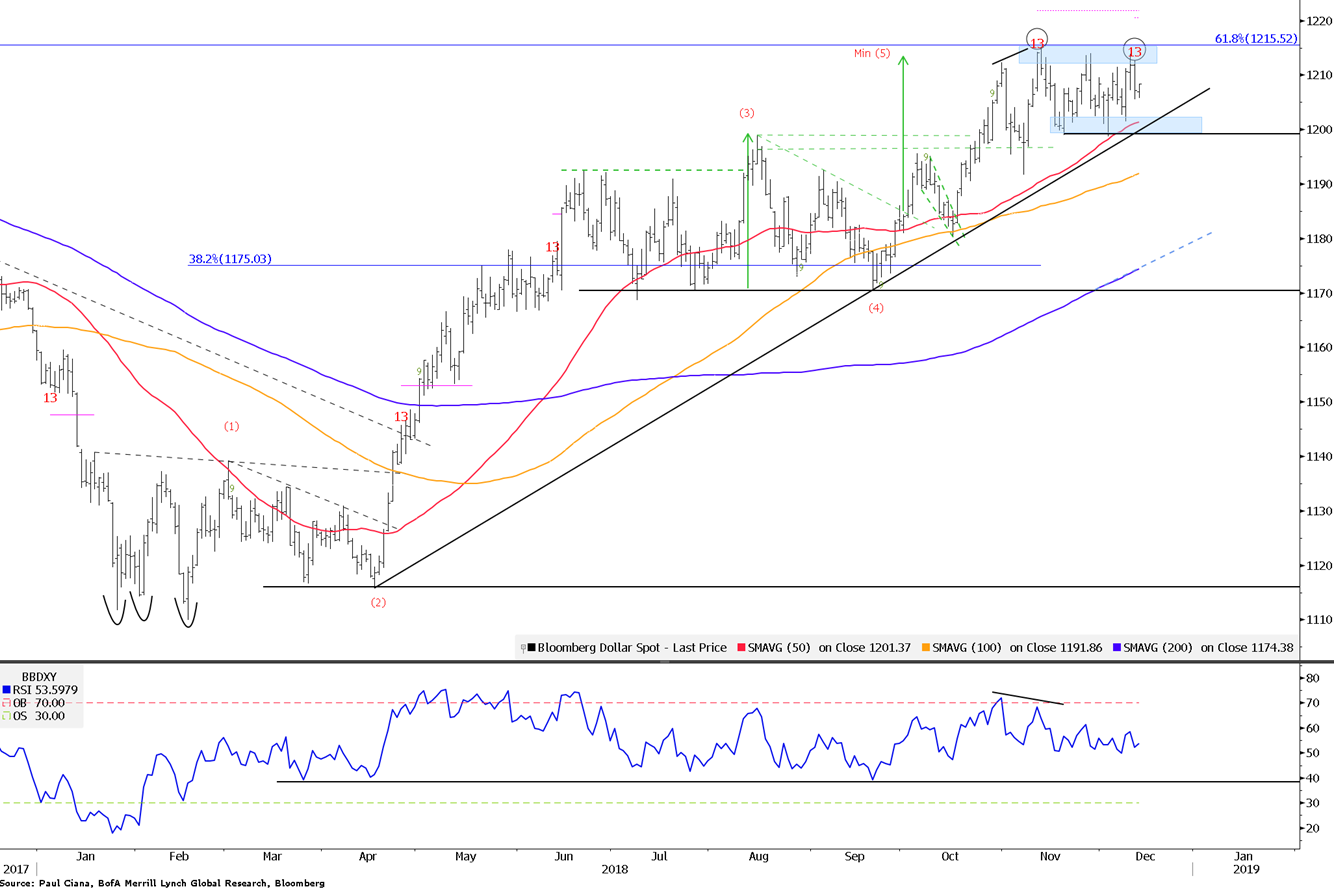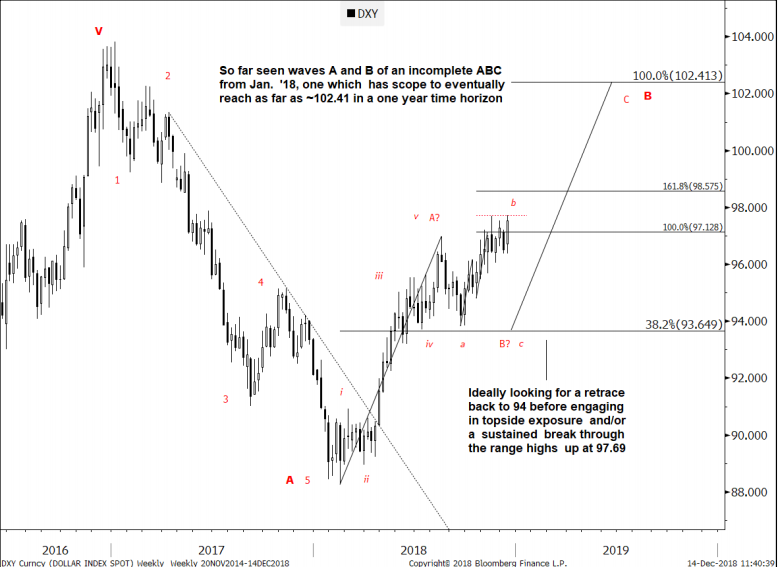Dollar Index to Decline into 2019 but Bank of America says It's a Buying Opportunity
- Written by: James Skinner

© kasto, Adobe Stock
- USD to decline into 2019 year but we're buyers says Bank of America.
- Charts flag robust outlook for next year despite short-term sell signals.
- Goldman Sachs says USD will rally into year-end but warns of correction.
The U.S. Dollar index will decline in early 2019 after another test of its cycle-high around year-end, according to analysts at Bank of America Merrill Lynch, who say this should be treated as a buying opportunity.
Any retreat by the Dollar index over coming months is likely to be nothing more than a temporary correction, according to the technical analysis team at Bank of America, that gives birth to another another challenge of its January 2017 high.
"With no bullish breakout, two sell signals and a triple top (range top) forming, the USD is still vulnerable to a decline (countertrend). Given the weekly charts bullish head and shoulders base, we prefer to buy USD into a BBDXY decline into the 1180s," says Paul Ciana, a technical strategist at Bank of America.
Ciana refers to the Bloomberg Dollar index, which is different to many other indices of the currency but moves in an almost identical fashion.
The index failed to break above its 1,215 peak for the 2018 year on December 11 for a third consective time in recent months, which is a sell signal according to Ciana. And that's not the only one given off by the charts of late either.
"This level, which is the 61.8% Fibonacci retracement of the 2017-2018 downtrend, is a big level to hold for a USD top to form and correction to follow in early 2019, which is our base case," Ciana writes, in a recent note to clients. "On December 12 another sell signal occurred, the second of its kind, from the TD Sequential indicator."
Above: Bank of America technical analysis of Bloomberg Dollar Index.
All of the above suggests the Dollar index either has already topped out, or is close to running out of gas for the current year, and that it will soon succumb to a technical correction that drags it lower. This could potentially drag the index 3% lower from its peak over coming monthts, all the way down to 1,180.
But Ciana also flags that the Bloomberg index formed a head-and-shoulders base in September that suggests upside is in the cards for 2019.
Moreover, in the bank's year-ahead outlook, he says other indicators also suggest another robust performance is likely for the greenback next year.
"Given the weekly charts bullish head and shoulders base (See year ahead), we prefer to buy USD into a BBDXY decline into the 1180s," Ciana says.
The Bloomberg Dollar index was quoted -0.32% lower at 1,204 Tuesday while the Dollar Spot index, which is a more frequently quoted measure of the greenback against rival currencies, was -0.30% lower at 96.80.
Ciana's analysis is almost seconded by the technical strategy team at Goldman Sachs too. Sheba Jafari, an analyst at Goldman, wrote in the bank's year-ahead outlook this week that the Dollar Spot index could be gearing up for one last test of its peak for the current economic cycle.
But he also warns that it's important that clients watch for signs of a top and subsequent correction lower when the index next returns to its earlier peak.
"The DXY has a medium-term target at ~102," Jafari says. "It puts the market right back at the previous cycle highs from Jan 17, 103.82. Within the bigger scheme of things, the DXY is in a large B wave of an ABC from the Jan 17 cycle highs. Being that the initial sell-off from that peak formed 5-waves, there should in theory be another 5-wave descent to match that."
Above: Goldman Sachs technical analysis of Dollar Spot index.
The Dollar index has risen by 4.9% in 2018 after reversing what was once a 4% year-to-date loss, which was wracked up mostly during the first quarter.
A superior performance from the U.S. economy was behind the move, because it enabled the Federal Reserve to go on raising its interest rate steadily.
U.S. growth picked up just as economies elsewhere in the world slowed and their respective central banks signalled to markets that they intend to continue sitting on their hands for the foreseeable future.
This trend could eventually reverse, although analysts say such a thing would first require clear signs that U.S. economic momentum is fading, or that growth in Europe and other parts of the world is beginning to accelerate once again.
Advertisement
Bank-beating exchange rates. Get up to 5% more foreign exchange by using a specialist provider to get closer to the real market rate and avoid the gaping spreads charged by your bank when providing currency. Learn more here






